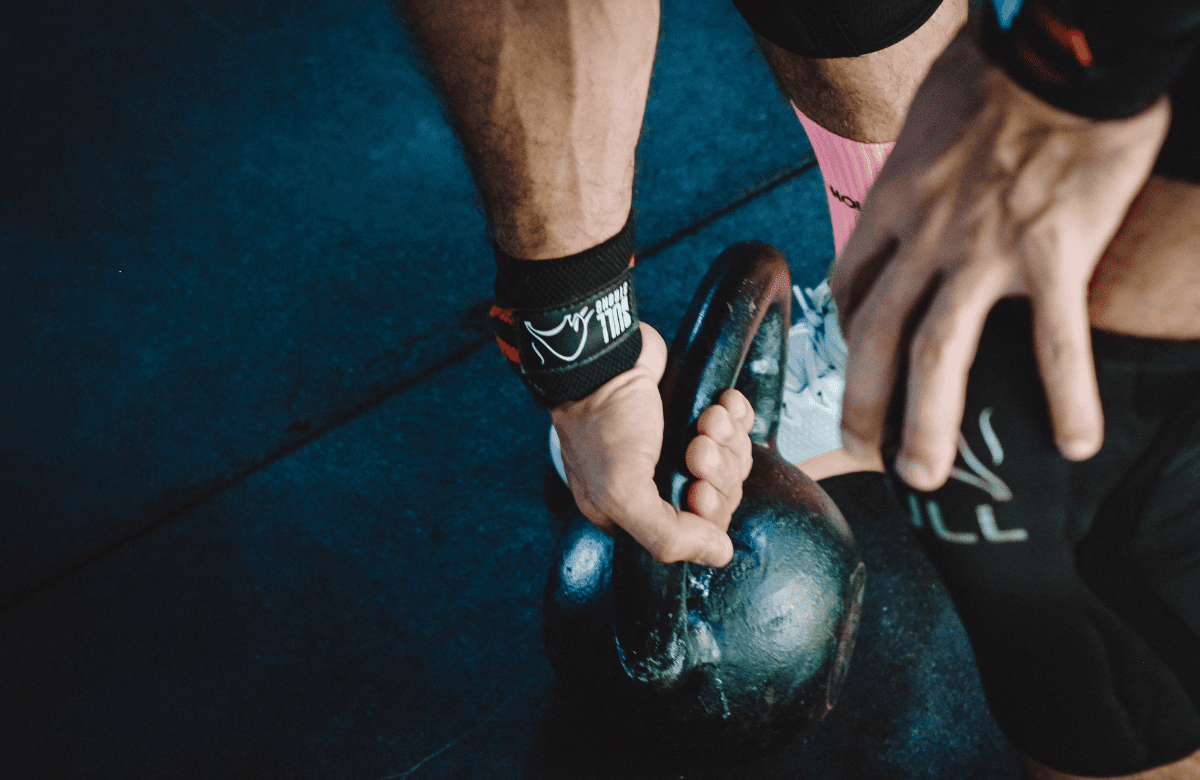Are you ready to learn about the high-impact kettlebell windmill exercise? This diverse movement is practical, works the entire body, and has several variations. Although it’s a complex exercise, the windmill position offers several unique advantages.
We cover everything you need to know about dynamic exercise in the article below, so you can exercise safer and more effectively. Here’s your complete kettlebell windmill exercise guide.
Although the kettlebell windmill is considered an advanced movement, it’s a practical exercise that fits several routines.
The exercise targets the entire body and emphasizes strength in the obliques, glutes, and shoulder muscles. It can be effective in improving core strength, shoulder stability, and joint mobility.
You’ll typically find the exercise inside CrossFit and boot camp-style programs that are combined with traditional strength training protocols. There are several variations and loading options for the kettlebell windmill, making it an extremely versatile movement.
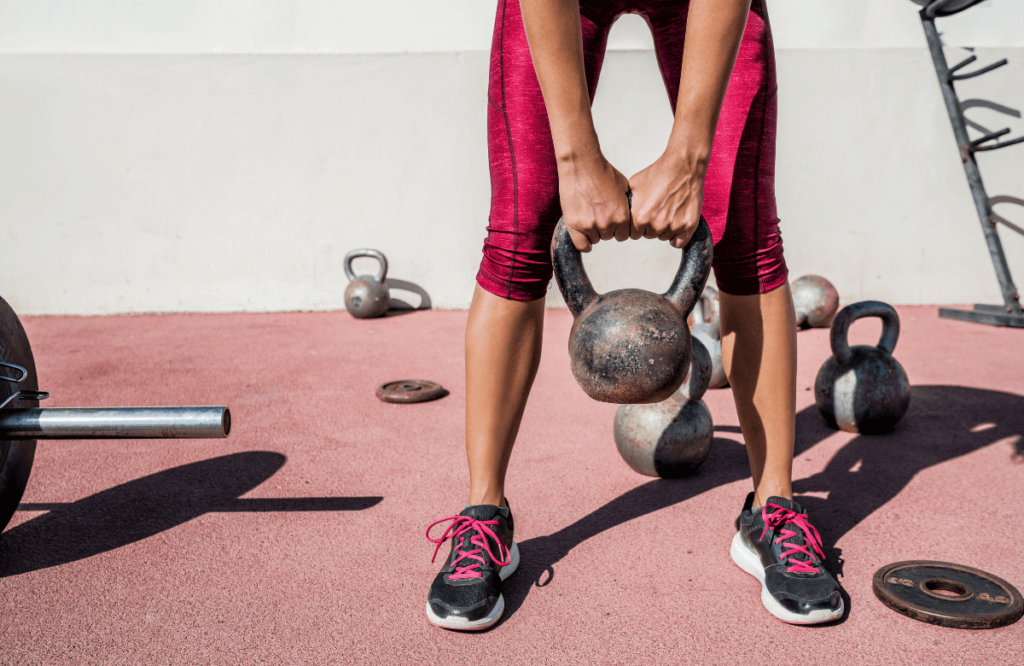
Jump to:
How to Do a Kettlebell Windmill Exercise
The kettlebell windmill is an advanced exercise, so you’ll need a reasonable level of stability, strength, and mobility. Be sure to use smaller weights or no weight at all when learning the technique. You can gradually increase your weight as you become more comfortable with the movement.
Stand with your feet a bit wider than hip distance apart. There should be a soft bend in your knees. Your toes can rotate out ever so slightly, as you’ll have an increased range of motion. Now, use the following steps:
- Hold the kettlebell with your right hand. Extend your right arm overhead with your palm facing forward.
- Next, extend your left arm down in front of your left thigh to create a “windmill” pose.
- Hinge at your hips to lower your upper body down to your left side. Your left hand should face forward as you slide it down toward your foot. Your right arm should be steady and fully raised overhead. The lowest position will have your torso angled to the left but roasted toward the right. When completed successfully, you’ll notice a bit of weight shift into the right hip.
- Now, reverse the exercise. Lift your body and maintain a strong straight back. Ensure the weight is steady and extended over your right shoulder.
- Go back to the starting pose to finish the rep and start again. Ensure that you keep a strong, straight spine during the movement.
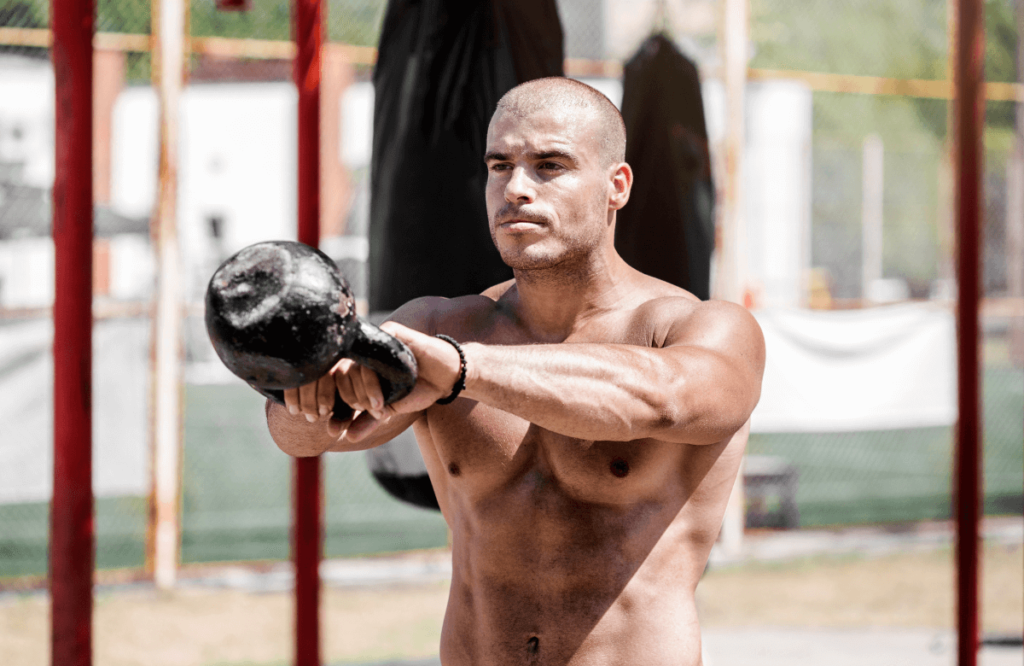
Avoid These Common Mistakes
Mistakes are part of the learning process. However, avoiding common pitfalls can make kettlebell windmill exercises safer and more effective.
Too Much Weight
Like any other exercise, it’s crucial to use enough weight, so the movement is adequate but not dangerous. Because the kettlebell windmill can be complex, it’s advised to use a lighter weight or no weight at all when learning the movement. You can gradually increase the load once you get the technique down.
Not Enough Rotation
You won’t have enough range of motion or reach low enough if you don’t use the right amount of rotation.
You can monitor where you place your hand during the lowering step of the movement to ensure you use the right amount of rotation. If you notice that you slide your hand down the exterior of your leg, then you may only tilt the torso laterally. This position doesn’t allow you to reach as low as you would like.
Instead, rotate your torso a bit to the right so that your hand is in front of the leg, not to your side. This slight adjustment should allow you to reach lower toward your foot.
Rotating Too Much
On the flip side, too much rotation can cause your shoulder to move out of range and place you at risk for an injury.
In these cases, you’re likely rotating the upper body only and not your full torso. You can inspect the position of the arm holding the kettlebell as you move the other arm down.
Do not allow the upper arm to move behind the shoulder when your lower arm is beside the foot. Only rotate the chest enough so that the weight stays directly above the shoulder as you lower your body. Ensure your spine stays straight and the core is engaged to avoid twisting at the waist.
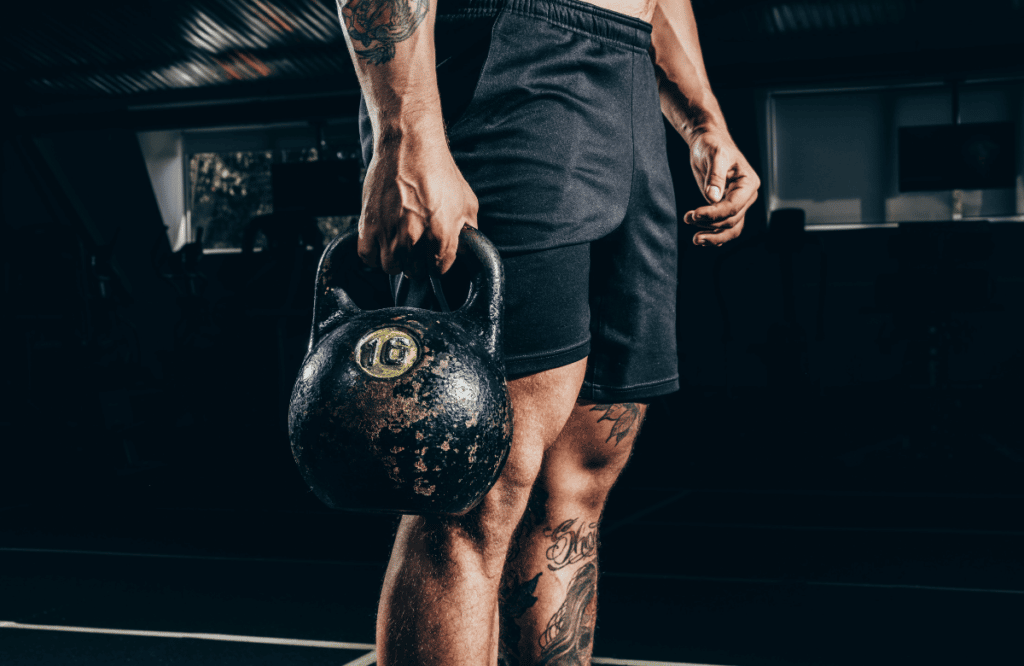
Overextending Your Shoulder
Overextension is a common mistake for many movements, including the kettlebell windmill. Too much extension can cause your upper arm to move behind the shoulder blade and cause pain or injury.
Inspect the movement of the shoulder joint when your body is lowered to one side. Your chest and shoulder should look like a flat, straight line. If you see a break at the joint and the arm bends backward near the shoulder, bring your hand forward to maintain a straight line.
Bending the Knees
Less flexible individuals may bend their legs to get their hands lower to the ground. Too much bending in the legs will reduce the effectiveness of the movement and potential benefits.
It’s OK to keep soft knees that aren’t locked straight on the side when you lower your arm. The bend should be small and unnoticeable. Your other left should maintain a straight position.
What Muscles Does the Kettlebell Windmill Exercise Activates?
The kettlebell windmill works the entire body, but some muscle groups are activated more than others. Muscles like the core, shoulders, and hips are prioritized as they’re necessary for stabilization.
The Shoulders
A successful kettlebell windmill requires high amounts of shoulder stability, mobility, and strength. The movement uses the rhomboids, rotator cuffs, and upper back for the isometric contractions that support the overhead load.
The Obliques and Core Muscles
The obliques and core muscles are also activated. These muscles help prevent spinal flexion and extension, which can reduce an individual’s risk of injury and improve core strength. The windmill also emphasizes proper hip-hinging movement to support core stability, mobility, and power.
Your Glutes and Hamstrings
The kettlebell windmill is excellent for the glutes, hamstrings, and other leg muscles. The movement places a significant stretch on the glutes and hamstrings, which improves hip function over time. The glutes also work solely to extend the hips as the lifter completes a rep and returns to the starting position.
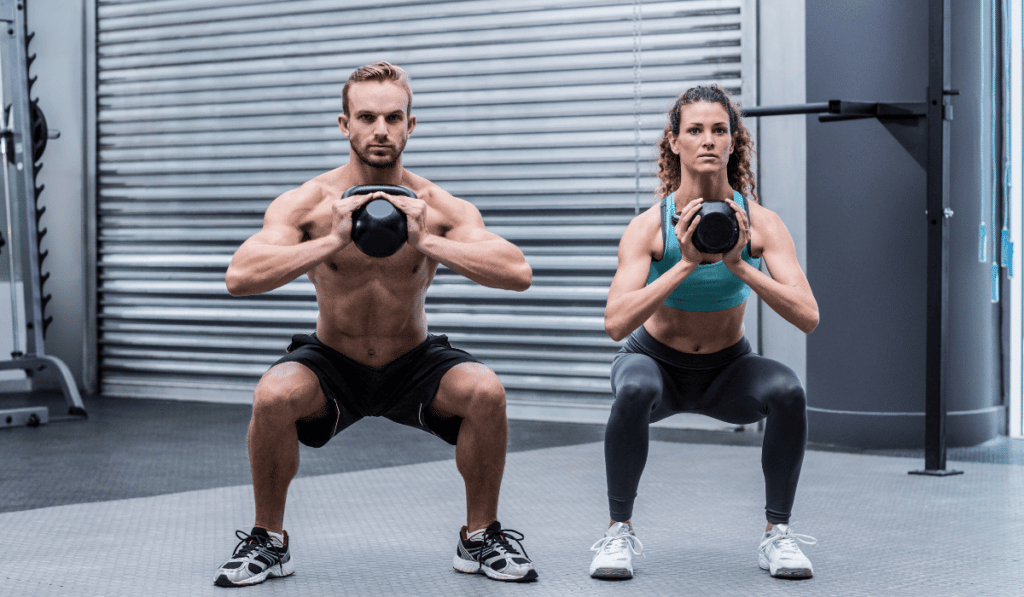
Kettlebell Windmill Exercise Benefits
Regardless if you’re already using kettlebells or looking to start, there are several reasons to add this movement to your workout program. Although it’s a complex kettlebell exercise, it has tremendous benefits to daily function and muscle strength.
Improved Daily Function
One of the benefits of kettlebell windmills is that they can improve daily function, as the movement mimics daily activities.
For instance, you may have to bend over at the hips to lift things off the floor when playing with your children or cleaning up around the house. The kettlebell windmill acts as a functional exercise that can improve your ability to execute daily activities safely and effectively.
On top of that, the rotation and weight of the exercise improve the body’s ability to perform challenging tasks.
Movements like reaching to the side, grabbing things under the bed, and bending forward can become more accessible. Other tasks like stabilizing your body while lifting something overhead can also become safer.
Doesn’t Require Much Equipment
One reason kettlebells are popular is that they don’t require much equipment compared to traditional strength training. Not to mention, restrictions like gym fees, gym anxiety, and the time to commute can make it even more challenging to exercise.
So, if you don’t have a gym nearby or you’re looking for home equipment, kettlebells can be extremely useful.
Builds Muscle
The kettlebell windmill is a full-body movement that stretches muscles like the hips, obliques, and hamstrings. It also enhances the strength of the shoulders, glutes, and core muscles. Each of these muscles plays a role in stability, strength, and mobility.
For instance, stronger core muscles, like the obliques, can improve stabilization and reduce the risk of injury.
The improved hip function also makes it easier to bend, tilt, and rotate throughout daily activities. On top of that, increased shoulder stability not only helps you in everyday tasks but can improve your other lifts and upper body sessions.



